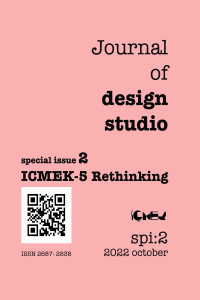Biophilic Design for Bringing Educational Spaces to Life
Biophilic Design for Bringing Educational Spaces to Life
Bringing living structures to our educational spaces, especially universities, when most educational spaces are devoided of natural features, is a concept that needs to be pervasive within the architects and designers who are responsible to create healthy and creative spaces for the students. Our biology and psychology are in a sustainable need for a connection with the natural environment. The biophilia hypothesis demonstrates that human beings are attracted naturally towards the natural environment and the detachment from it generates negative consequences that affect the physical, psychological and social aspects of the human being. Within this paper, it is argued that educational spaces need to correlate with the environment through the adoption of biophilic design as it is a design approach that aims to rebuild the connection between the natural world and the built environment through adopting biophilia principles and elements Not every educational space can be designed with a total response to the biophilic approach; however, it is the architect’s responsibility to correlate natural features with the educational space in order to achieve a healthy environment for the students. In this article, the concept of biophilic design in the built environment and integrating the nature with the interior and exterior spaces will be first illustrated, followed by a discussion about Innovation center “OZU X” at Ozyegin university campus adoption of biophilic design elements as well as the effects biophilic design on the psychological and social health of Ozyegin university students.
Keywords:
Biophilia, biophilic architecture green university,
___
- Africa, Julia K. and Sachs, Naomi A., (2015), Book Review: Biophilic design: The theory, science and practice of bringing buildings to life, “Kellert, S. K., Heerwagen, J. H., Mador, M. L. (Eds.). (2008). Biophilic Design: The theory, science and practice of bringing buildings to life. Hoboken, NJ: John Wiley & Sons, Inc.”, Health Environments Research & Design Journal. 2015. Vol. 9, no. 2, p. 176-178. SAGE Publications
- Almusaed, A., Almusaed, A., Abdushaik, Z. K. and Khalil, S. (2006). Biophilic architecture, the concept of healthy sustainable architecture. PLEA2006 - The 23rd Conference on Passive and Low Energy Architecture, Geneva, Switzerland
- Blom, M., (2013), Biophilic architecture and its influence on human behaviour and well-being: A proposed urban multi-use office park development, MSc Thesis, University of KwaZulu Natal Durban,
- Browning, W.D., Ryan, C., Clancy, J. (2014), 14 Patterns of Biophilic Design, Improving Health & Well-Being in the Built Environment. New York: Terrapin Bright Green. Fromm, E. O. (1964). The Heart of Man. UK: Harpercollins.
- Gillis, K. and Gatersleben, B., (2015), A Review of Psychological Literature on the Health and Wellbeing Benefits of Biophilic Design. Buildings. 2015. Vol. 5, no. 3, p. 948-963. DOI 10.3390/buildings5030948. MDPI AG
- Grinde, B. and Grindal-Patil, G. G. (2009). Biophilia: Does Visual Contact with Nature Impact on Health and Well-Being?. International Journal of Environmental Research and Public Health, Int. J. Environ. Res. Public Health 6.
- Heerwagen, J. H. and Hase, B. (2001). Building biophilia: connecting people to nature in building design. Environmental Design + Construction, Mar/Apr, 30-36.
- Heerwagen, J., Kellert, Stephen R. and Mador, Martin, (2013), Biophilic Design. Hoboken, N.J. : Wiley.
- Holm, Ivar (2006). Ideas and Beliefs in Architecture and Industrial design: How attitudes, orientations, and underlying assumptions shape the built environment. Oslo School of Architecture and Design.
- Kayıhan, Kutlu Sevinç, (2018), Biophilia as the Main Design Question in the Architectural Design Studio Teaching. Megaron / Yıldız Technical University, Faculty of Architecture E-Journal. 2018. DOI 10.5505/megaron.2017.59265. LookUs Bilisim, Ltd.
- Kellert, S. R., (2005a), Designing Healthy Schools. Independent School. 2005. Vol. 65, no. 1, p. 58-61.
- Kellert, S. R. (2005b). Building for Life: Designing and Understanding the Human-Nature Connection. Washington, DC: Island Press.
- Kellert S.R., Heerwagen J.H., Mador M.L. (2008). “Biophilic Design: The Theory, Science and Practice of Bringing Buildings to Life”, Hoboken, NJ: John Wiley & Sons, p. vii, viii, 3, 13.
- Wilson, E. O. (1984). Biophilia. United States of America: Harvard University Press
- Yayın Aralığı: Yılda 2 Sayı
- Başlangıç: 2019
- Yayıncı: Orhan HACIHASANOĞLU
Sayıdaki Diğer Makaleler
Obsolete? Relevance of the architect’s role and the changing nature of the architectural profession
Biophilic Design for Bringing Educational Spaces to Life
Architectural Design Studio Culture
Contemporary Mosques Conventional and Innovative Approach in Mosque design at Turkey
Computational approach and morphogenesis
Architectural Design Products of Students at Istanbul Fine Arts Academy in 1930's
